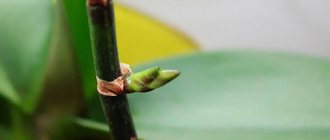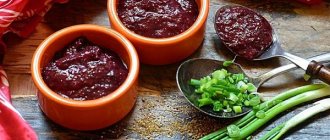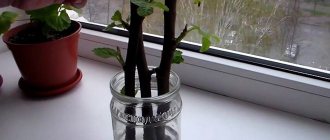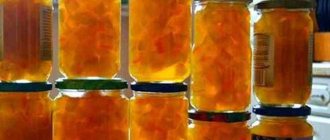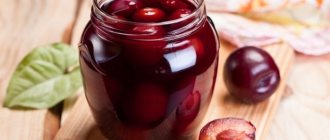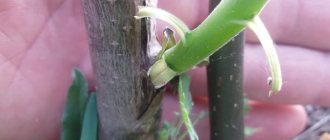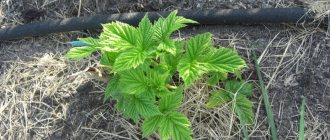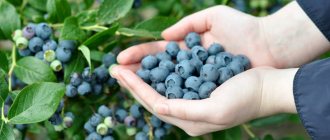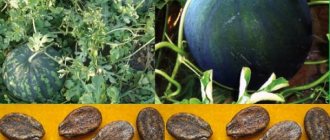Gardening » Citrus » Lime
3
1182
Article rating
Kira Stoletova
Among all the plants of the Citrus genus, indoor lime has gained great popularity. Anyone can grow limes at home with proper care.
Growing limes at home
Botanical description
Lime is a small tree whose height ranges from one and a half to five meters. It has a lush crown, with thorns characteristic of citrus fruits growing on its branches. From one to seven flowers bloom on inflorescences. Lime fruits cannot be called large - their diameter is from three to six centimeters. The shape resembles an egg, the colors of which can be green, yellow or greenish-yellow. After the fruit has fully ripened, the skin becomes thin. Inside the fruit, the pulp is greenish in color and is very juicy and acidic. Blooms and bears fruit all year round. The most abundant flowering occurs in the rainy season - from the beginning of May to the end of June. The fruits ripen in late summer and the first months of autumn. They can be stored for up to two months at a cool temperature of eight to ten degrees, with humid indoor air.
Features of care
Experts note its unpretentiousness in choosing soil - lime grows even in sandy and rocky areas, where the soil is extremely poor. In fact, this citrus is more capricious than many of its fellows and prefers good soil and climatic conditions. The most suitable drained soil composition for it can be prepared from light loamy soils from the depths of the arable layer.
The plant is also demanding on temperature; it does not tolerate cold and can suffer even at low temperatures of minus 1-2C.
Lime trees have long been learned to be grown indoors.
They love places with good lighting, but it is advisable to avoid direct sunlight during midday. If the room is not well lit, a phytolamp can help.
All owners want to see their pet cheerful, beautiful and receive a good harvest of exotic, healthy fruits from it. To do this, you need to provide warmth: in spring and summer up to 35 degrees, in autumn and winter up to 15 degrees.
And air humidity should be increased, brought to natural conditions. In the summer, irrigate indoor limes at least once a day with lukewarm water. An air humidifier in the form of water poured into a container near the tropical guest may also be suitable.
With the onset of spring, homemade limes begin to actively grow. Help him with feeding. Special fertilizer suitable for citrus fruits can be purchased at the store.
Watering occurs in the form of moistening the top layer of soil as it dries. River, rain, distilled water or melted winter water from snow works well. Any water must have a temperature above 20 degrees.
Young trees are replanted every year due to their growth. For mature limes, it is enough to change the top layer of soil.
METHOD 2: LIME FROM SLEEPING
- Usually cuttings are cut from shoots (they must be a year old). Their length is up to 15 cm. Make sure that there are 4-5 buds on the cuttings. Carefully make an incision under the first lower bud. It should be oblique. Next, a centimeter above the top is made - straight.
- For this case, the soil is prepared according to the following recipe: leaf humus plus river sand. Place a layer of expanded clay and soil in the container. It should be compacted a little. This is easy to do if you connect your palms. After this, the soil is slightly moistened.
- Before planting, the cuttings are treated with a growth stimulator, and the sections are carefully sprinkled with crushed charcoal. It must be buried one and a half to two centimeters into the soil. Make sure that the leaves of the plants do not touch each other.
- Plants are sprayed and covered with a lid, bag or aquarium to create a greenhouse.
The containers are sent to a well-lit room, making sure that the plant is not exposed to direct sunlight. Plants are watered 1-2 times a week, and sprayed twice a day. You will notice the first roots in a couple of weeks. However, the transplant should be carried out after three months. In addition, there should be a lump of earth on the roots.
In order for the transplant to be successful, a week before it is necessary to increase the amount of time during which the lime is left without shelter.
Varieties
Mexican, or real lime
It is the most cultivated in tropical conditions, which has not very large fruits. Oil is squeezed out of them or subjected to long-term steam distillation.
Sweet lime, or Palestinian
Distributed in Middle Eastern countries. In addition to the fact that it produces high yields, the variety is a plant that is very advantageous in its decorative properties. After all, this citrus is evergreen, blooms all year round with white flowers collected in bunches and has a strong aroma. The air around it is filled with a fragrant smell, and it is worth buying such a plant for your home just because of this.
Sweet limes are distinguished by their fruits. Firstly, their shape is like a ball or slightly elongated, with a thin yellow skin, aromatic, fragrant. Secondly, the taste - the flesh is yellow, very tender and juicy in consistency. They also differ in the absence of acid, characteristic of other varieties; the fruit tastes sweeter with a small dose of astringency. The juice is similar to lemon juice, but has a much milder taste.
It is precisely because of the sweetish taste that the juice of the Palestinian lime fruit is included in jam, sorbet, and carbonated drinks. The fruits are used in preparing poultry or meat dishes to enhance their taste without excessive acidity. Lime peel is also used in industrial production - essential oil is made from it.
Sweet lime is also called Indian lime because it is most cultivated in Egypt and India.
The variety is also valuable because it is useful for colds and flu. By starting a homemade sweet lime, you can kill two birds with one stone - have a beautiful tree in your apartment and provide yourself with fruits with medicinal properties.
Tahiti or Persian lime variety
One of its features can be considered the absence of seeds inside the fruit. The fruits themselves are fragrant, very juicy, with tender and sour pulp of pale shades. They are the size of a small lemon. The surface of the peel is smooth.
If you purchase a Persian lime seedling, the trees grow strongly and quickly, spreading out wide with branches of different lengths with a small number of thorns. Young branches and flowers have a purple tint. It blooms all year, especially vigorously in spring, with clusters of flowers in dark glossy foliage. Resistant to cold weather.
Judging by the signs, it is a hybrid of sour lime and lemon or citron. Loves soil with good drainage.
Very useful plant:
- will decorate any room;
— bears fruit all year round with seedless fruits;
- gives a large harvest throughout the year;
- fills the air with aroma;
- withstands low temperatures.
There are many fruits on the trees, but you need to wait until they turn yellow for ripening. They are stored for about two weeks.
Tahiti lime juice is valuable as a strong antidote, relieves severe irritation and inflammation caused by touching poisonous plants.
This lime is used in making lemonade. They are good for rinsing hair after washing.
Kaffir lime or Kaffir
Originally from Asia, it is the most valuable variety due to the uniqueness of its leaves. If you dry them, you can use them instead of bay leaves - that’s the aroma they have.
The fruits, unlike other varieties, contain little juice, but are also notable for their fresh smell. If you have a Kaffir tree at home, there will always be fresh and pleasant air in the room. In addition, it has a beneficial effect on the body. Strengthens it, being a storehouse of vitamin C, regulates blood pressure, and helps digestive processes. This is how much benefit there is from indoor Kaffir lime.
Desert Lime
Cultivated as a fruit tree. It is a drought-resistant variety and is native to Australia.
Attracts with the unusual color of the leaves - gray-blue. Perhaps this is why it bears the second name Eremocitrus glaucosa. The branches are covered with thick thorns, which disappear from the tree with age or there are fewer of them. The fruits are pleasant to the taste, refreshing and spicy. Used as additives to sauces, drinks, marmalade, jams.
Finger variety
Due to its distribution in Australia, it is called the Australian fingerlime. The fruits are narrow, egg-shaped. The peel is not smooth, like many lime varieties, but rough. And the color is also not always the usual green, it can even be burgundy at some moments of ripening. The color of the pulp is also not always the same, most often the same shade as the peel. Due to its low calorie content, finger limes can be eaten even by overweight people.
Contains a large amount of vitamins. The fruits have the following effects on the human body:
- strengthen the immune system;
- cleanse;
- improve the functioning of the heart and blood vessels;
- protect teeth from caries;
- normalize kidney function;
- increase hemoglobin levels;
- prevent premature aging;
- take care of vision;
- help with vitamin deficiency.
Round lime
One of the Australian varieties, and the tallest of them, can have a length of about 10 m.
The fruits can be spherical or pear-shaped and not very large in size. The skin is of good thickness, rough to the touch with light yellow or pale green flesh. After full ripening, they are eaten and added to drinks.
With beautiful dark green foliage with an essential oil scent and delicate white or pink flowers, it is considered a beautiful ornamental plant and is great for adding a cozy look to your home.
Variety Rangpur
It is also called tangerine-lime (lemandarin). Named so, most likely, because of the orange peel of the fruit and red-orange pulp. The taste is a little like tangerine, but much more sour, still closer to lime.
The variety grows well, the trees are of medium size. They are considered decorative because of the purple color of the bark. The thin branches have a luxurious crown with dark green leaves, and the spines are short and few in number. Produces young shoots of purple color with the same flowers. A beautiful indoor plant that does well in pots. Cold resistant.
The Rangpur fruit is medium in size, with a variety of shapes - spherical, round, and ovoid. They contain many small seeds. The pulp is not only very juicy, but also sour. The skin of the fruit is thin, like all varieties, but looser. The fruits hang on the tree for quite a long time.
The Rangpur variety is used in making marmalade.
Variety "Tahiti" variegated
A very rare and interesting variety - variegated leaves, striped fruits. When the fruits are finally ripe, they turn pale yellow. They have a lot of juice, the taste is quite sour, but pleasant.
Variegata blooms several times throughout the year, as the variety is remontant. The fruits are not very large, with a small number of seeds. Smooth thin skin, tightly adjacent to the flesh.
The trees of this variety are powerful, with spreading foliage, and there are very few thorns on the branches.
The Neapolitanum variety is very old. The trees are not very tall and grow slowly, but they are cultivated for their very pleasant taste.
Choose plants
Diseases and pests: how to detect and how to treat a plant
It is important to periodically carefully inspect the tree in order to take timely action if it is attacked by pests or becomes sick.
Signs of plant trouble:
- The leaves are deformed, turn yellow, and fly off.
- The lower part of the leaf is covered with rust-colored dots.
- Sticky coating on the surface of the plant.
- On the reverse side of the leaf blades is a white substance resembling pieces of cotton wool.
- Small bugs, green or black.
- Dark, soot-like coating on leaves.
- Cracks on the stem through which viscous liquid oozes.
The presence of such manifestations indicates that the plant needs help. It is important to know. How to care for a weak lime.
- It is necessary to wash the above-ground part of the plant with a soapy solution using a sponge. Covering the ground from its penetration with polyethylene.
- Replace the top layer of soil with fresh one.
- If washing with an alkaline solution does not produce results, spray with insecticides (“Aktara”, “Aktellik”).
Cracking of the trunk indicates that the plant has Gommosis. This disease develops most often as a result of improper watering or as a result of too much deepening of the root collar of the plant. It is treated by treating the wood with a 3% solution of copper sulfate. The surface of the stem is then covered with lime paste.
